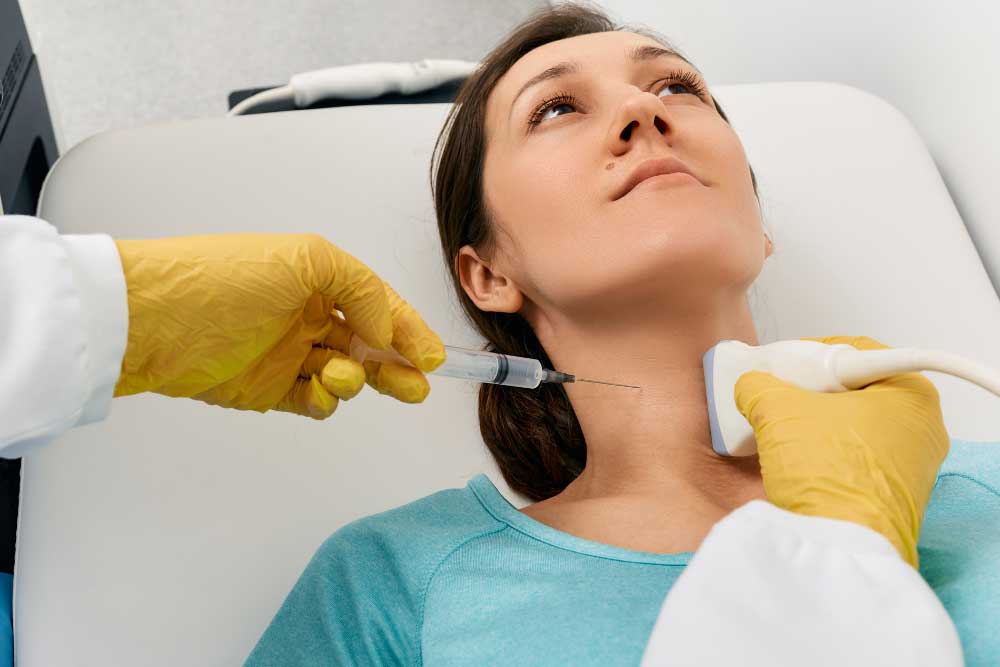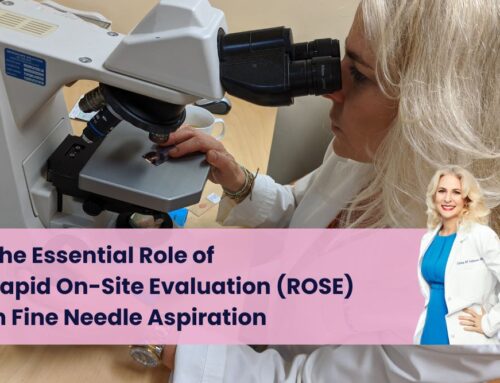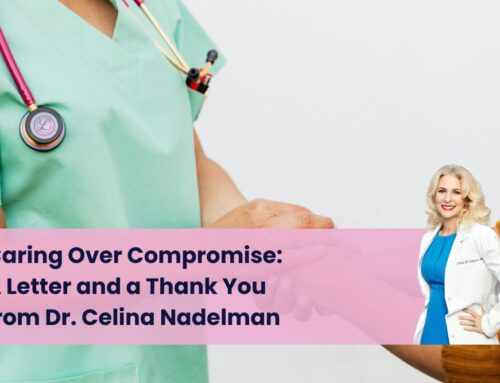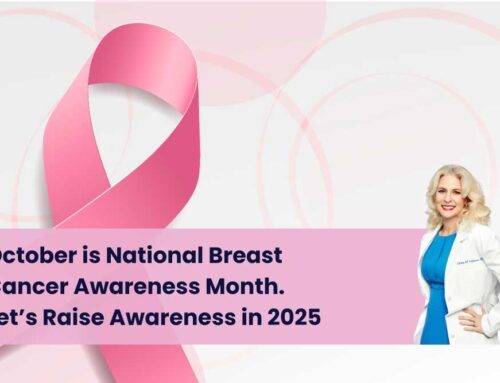
What to Expect During an FNA Procedure
Having a biopsy can be a frightening and stressful experience. Any type of medical procedure is enough to give most people the nerves; however, waiting for the results of the biopsy can add even more stress. As opposed to other types of biopsies, a fine needle aspiration biopsy also known as an FNA biopsy is a minimally invasive and relatively painless needle aspiration biopsy that allows you to return to your normal routine soon after. Additionally, if there is a lab onsite, the lab will be able to provide quick results to your referring doctor.
Fine needle aspiration is a relatively simple process that uses a thin needle to extract tissue or fluid for examination. Most often, FNA is done on the thyroid, head and neck, salivary gland, breast, and lymph node. This process can also be used to evaluate any abnormal area detected through ultrasound or CT scan, helping your provider guide the needle precisely into the correct location.
Usually there is no major preparation the night before the procedure. Oftentimes, you are asked to stop taking any medication that would thin your blood (ie Ibuprofen) 7–10 days prior to the FNA. When you arrive at Dr. Nadelman’s office, you will be shown to a treatment room, and Dr. Celina Nadelman will talk to you and take a focused history and physical exam. She and the sonographer will identify the area of concern using ultrasound sound waves to visualize the abnormal area, noting the lump’s imaging characteristics. After consenting you, your skin will be prepared by cleansing with an antiseptic and marking where the biopsy is performed. If you are not allergic, a local anesthetic, such as Lidocaine, will be injected superficially over the lump to numb the skin and surrounding tissue.
The procedure itself is relatively painless. The needle used for the FNA biopsy is extremely thin, even thinner than a needle used to draw blood. Dr. Nadelman will insert the needle attached to a syringe into the area of concern—almost like pushing a straw through sand—and via this “pushing” action, a small core of cells, known as the fine needle aspirate, is obtained. This is then ejected out of the needle and syringe onto a glass slide, smeared, and fixed. If the lump is cystic or unyielding, suction may be used to dislodge the cells. One or more slides may be air-dried and stained immediately. As Dr. Nadelman has a microscope in the procedure room and is a cytopathologist with a laboratory on site, she is able to review that slide to ensure that she gets enough adequate tissue to make a diagnosis later. The collected sample is examined under a microscope to look for abnormal or cancerous cells.
Due to this setup, results of the test can quickly be available to your referring physician—sometimes within a day’s time. This allows patients to receive the fastest and most accurate results. It will also help ease the anxiety that is often felt when waiting for the results.
Pain is usually not a problem after an FNA biopsy, but if you experience soreness, icing the area after the procedure or over-the-counter medication, such as acetaminophen, may alleviate the discomfort. If you notice a little bruising or swelling around the area, a warm towel will relieve it in the days following the procedure. However, FNA is a minimally invasive procedure, and you should be able to return to your normal routine soon.



